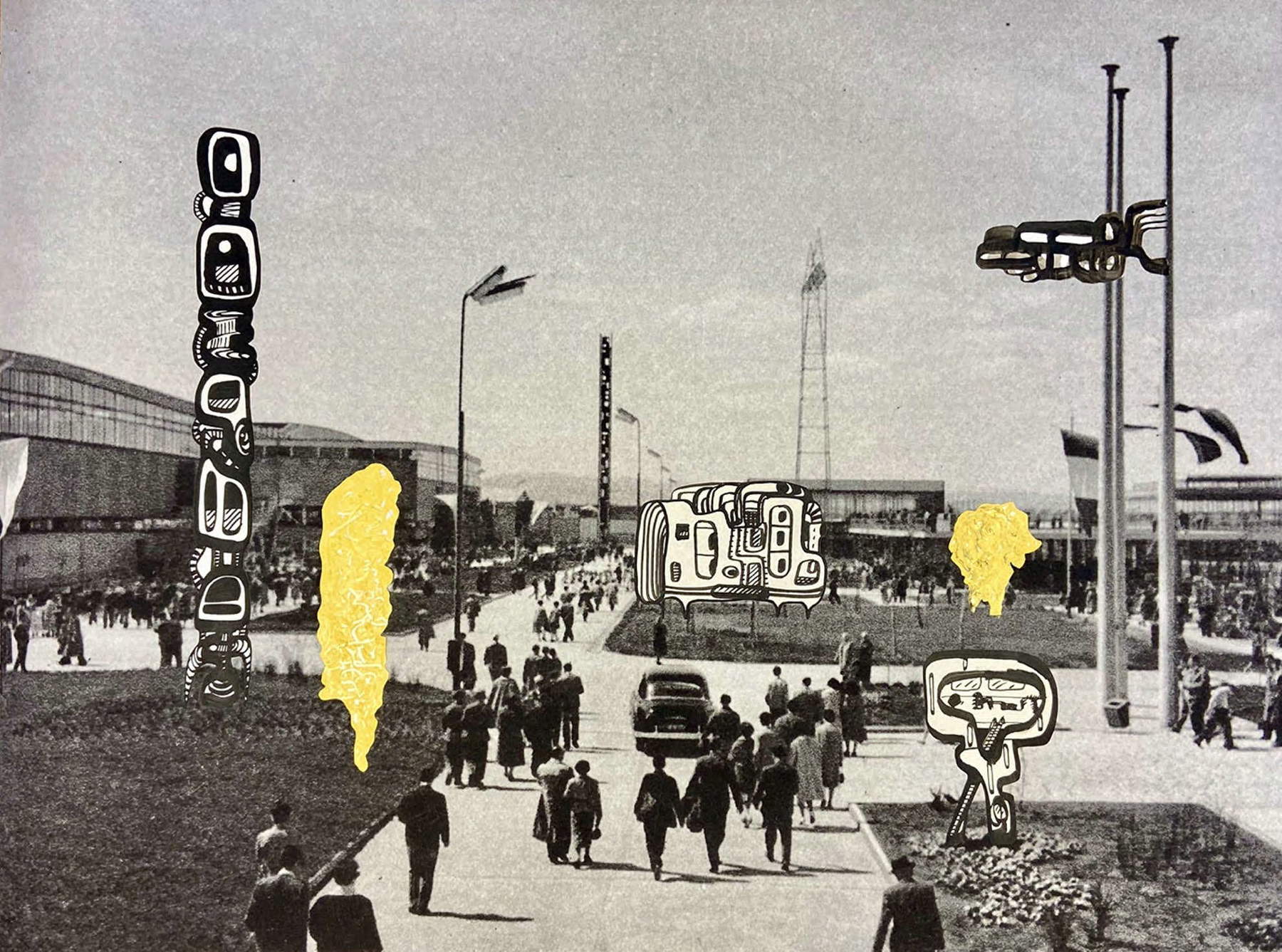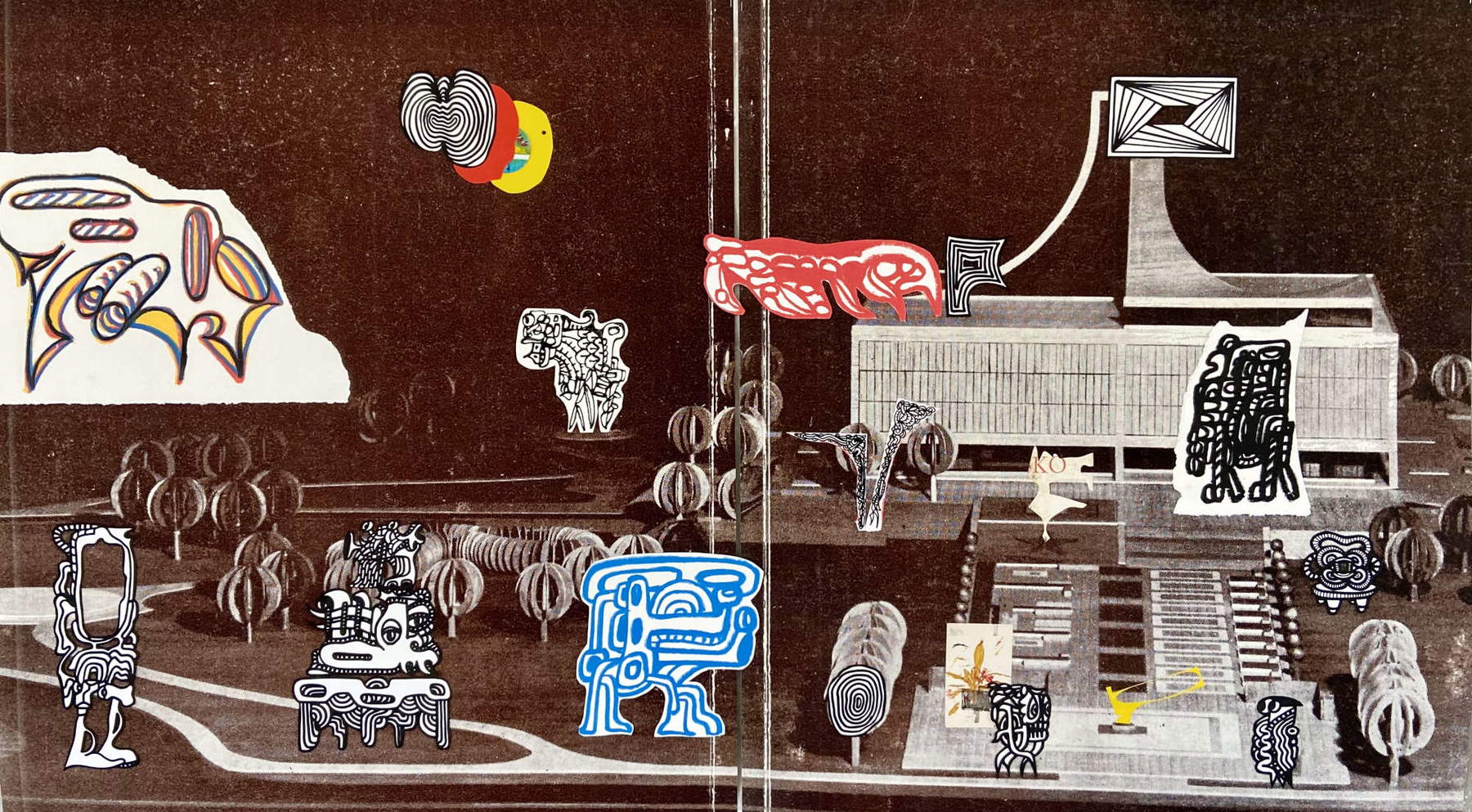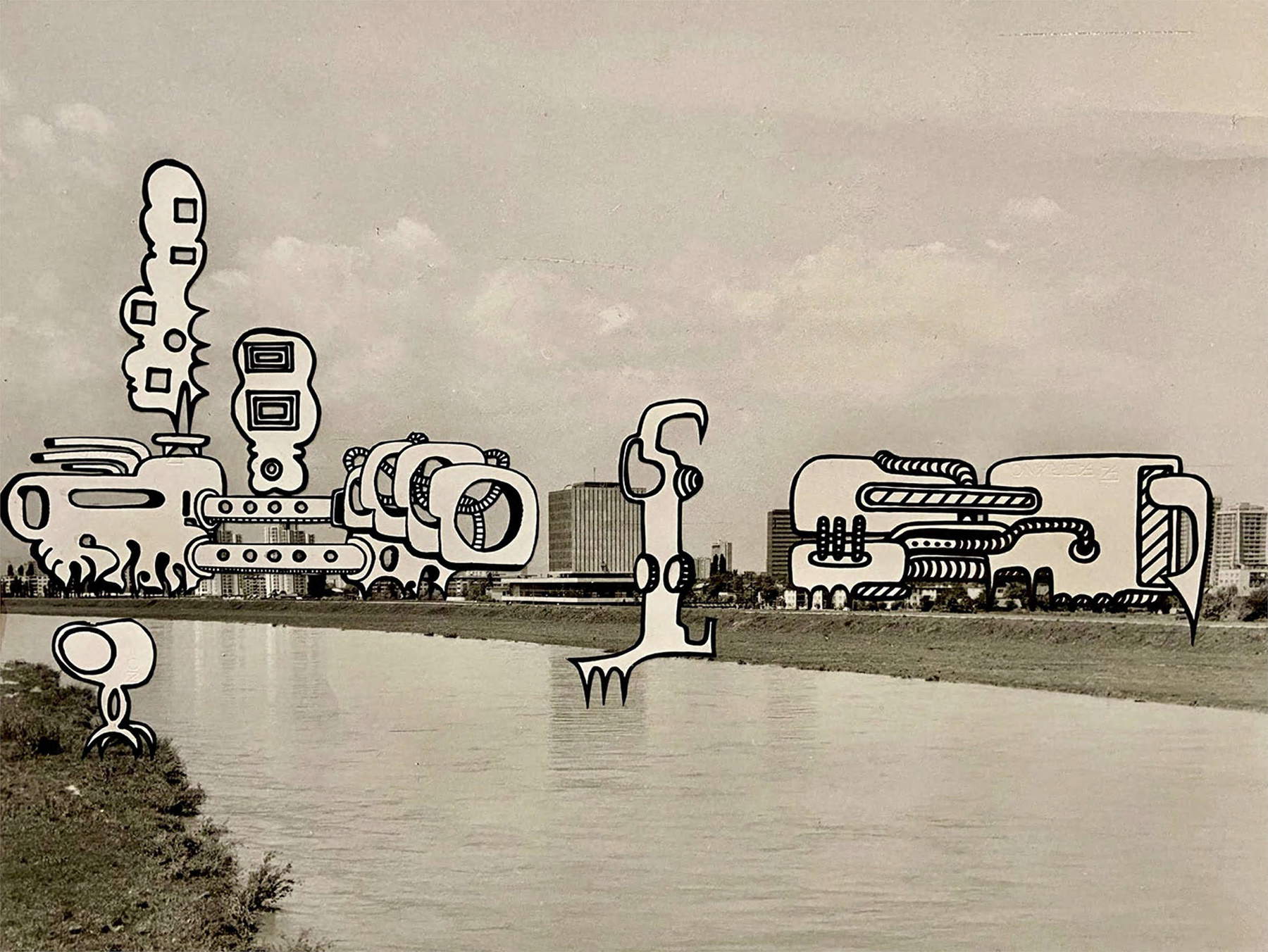The PAV - Parco Arte Vivente in Turin hosts from May 18 to October 2024 the exhibition Heliopolis by Marko Tadić, curated by Marco Scotini, which is part of an annual program that promotes reuse and circularity as strategies not only ecological and cultural, but also as utopian tools of survival.
Tadić’s work reconsiders the history of Yugoslav socialist modernism by comparing it with the practices of authors of the 1950s in Croatia, including Vyaceslav Richter and Vladimir Kristl, a key figure of the Zagreb School of Animation. Using a methodology that starts from the “waste of History,” as Walter Benjamin would have put it, Tadić identifies an active potential in inert memory that can be used to generate new narratives. Through the reuse and reinterpretation of period objects, such as postcards, geographical maps, slides and personal photo archives, Tadić brings to light a submerged archive, intervening on it and superimposing new narratives.
The exhibition Heliopolis was specially conceived for PAV and includes a core of works by Marko Tadić dedicated to the interaction with the thought of Vyaceslav Richter, one of the founding members of the avant-garde group EXAT 51 active in Zagreb between 1950 and 1956. This group aimed to promote and achieve a synthesis and intersection of all art forms. Richter, whose original work is featured in the exhibition, devoted nearly two decades to the perfection of techno-utopian projects in socialist urbanism, seeking through planning to meet the specific needs of society.
Tadić imagines and designs his utopian city by contaminating Richter’s designs with science fiction imagery and integrating an ecological reflection on these complex systems. Through drawings, collages and animations, he expands the concept, addressing new questions regarding the relationship between humans, the environment and technology, as well as the use of renewable resources. Heliopolis is structured into four thematic islands-Leaving the Frame, Flow Diversions, The Open Future and From the Shell (of the Old)-where the relationship between ecology, utopian architecture and science fiction is explored from different perspectives.
Through variation in the scale with which a system is represented, Tadić enriches understanding and enables new interpretations. Using miniaturization, he transforms debris and waste into toys in the Benjaminian sense, evoking a confrontation with the adult world he brings back to light, without depriving them of their documentary value. In Heliopolis, Tadić’s work rereads Vyaceslav Richter to propose a model that aims to establish a harmonious rhythm in the metabolism of society, in a continuous search for balance between construction and erasure, between possible futures and the transmission of memory.



Marko Tadić, born in Croatia in 1979, studied painting at the Academy of Fine Arts in Florence. His artistic practice ranges from drawing to installation and animation. He has received numerous international awards, including the Vladimir Nazor Award in 2015 for the best exhibition in Croatia and the Radoslav Putar Award in 2008 for best young contemporary artist.
He has participated in several art residencies in cities such as Helsinki, New York, Los Angeles, Frankfurt and Vienna. Tadić has also collaborated with the Zagreb Art Academy as a workshop tutor on various artistic topics, including artist’s book, field recording and radio drama. He currently works as a lecturer at the Academy of Fine Arts in Zagreb and the New Academy of Fine Arts NABA in Milan.
His films have been screened at numerous international festivals of animated and experimental film. In 2017, together with Tina Gverović, he represented Croatia at the 57th International Art Exhibition of the Venice Biennale.
In the context of the Heliopolis exhibition, AEF/PAV (Educational and Training Activities) are offering Workshop_81 on July 3 and 4, led by Tadić and aimed at Academy, University and young artist students, with a focus on stop-motion animation.
For schools and summer groups visiting the Heliopolis exhibition and installations in the 23,500-square-meter park, the workshop “Natura Segreta” is proposed, exploring the vast PAV landscape as a setting for a utopian and real vision of a possible Future City.
Also, on the occasion of the opening of the exhibition, it inaugurates The School (2024), a permanent intervention by Tadić designed for the PAV park, a welcoming and livable rest area for the public and schools during visits to the green space.
Heliopolis is produced in collaboration with the Museum of Contemporary Art in Zagreb, with support from Compagnia di San Paolo, Fondazione CRT, the Piedmont Region and the City of Turin. The exhibition is part of the “New Perspectives for Action” project, co-funded by the European Union.
 |
| Heliopolis: Marko Tadić's utopian city on display in Turin |
Warning: the translation into English of the original Italian article was created using automatic tools. We undertake to review all articles, but we do not guarantee the total absence of inaccuracies in the translation due to the program. You can find the original by clicking on the ITA button. If you find any mistake,please contact us.